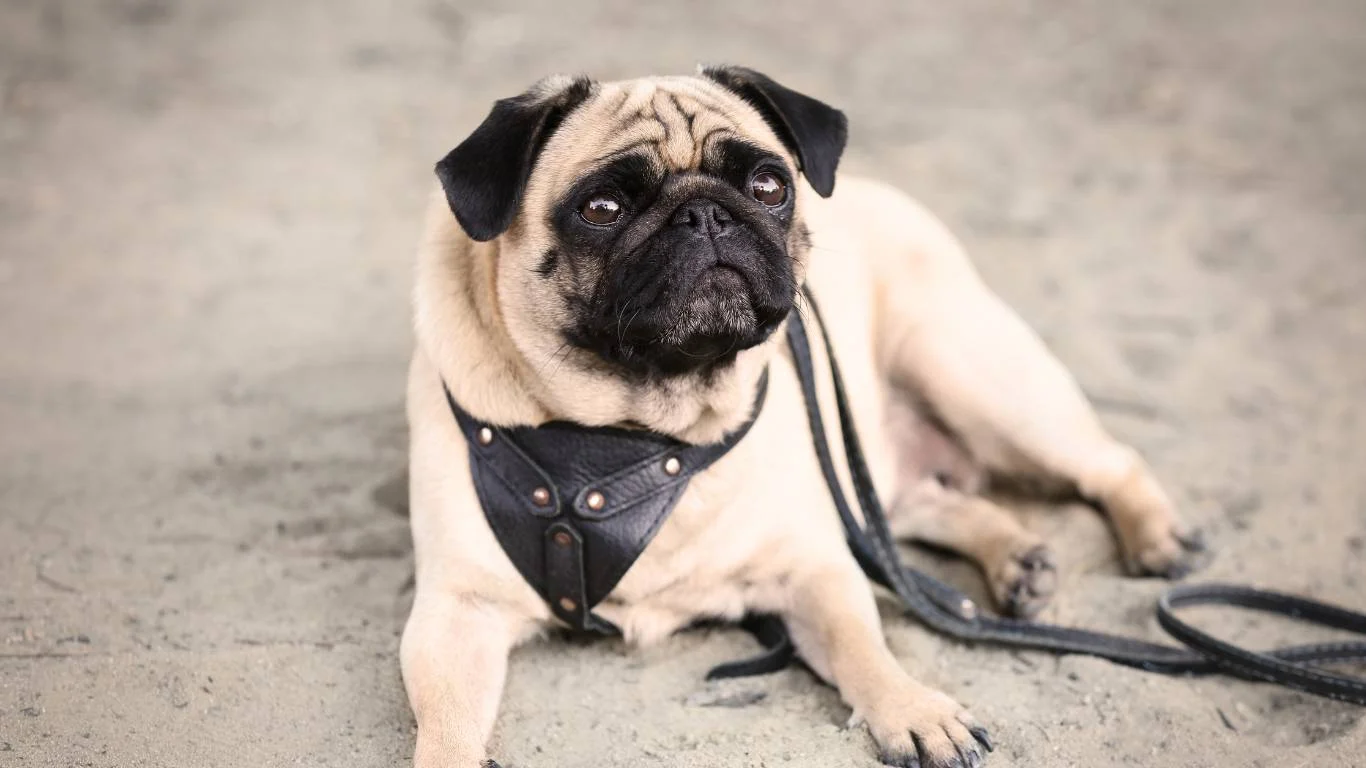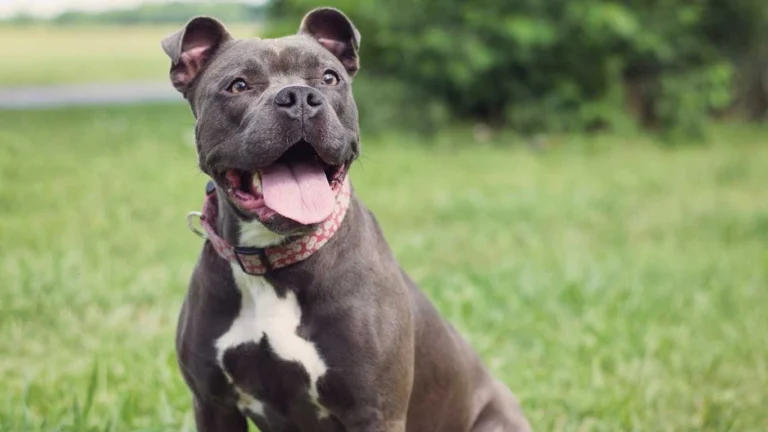Best Anti-Fungal Shampoos for Dogs: Top Picks for Skin Relief
If you’re a dog parent like me, you’ve probably noticed that our furry friends sometimes have itchy, irritated skin. While a lot of things can cause discomfort for our dogs, one of the most common culprits is fungal infections. These little troublemakers can leave your dog constantly scratching, licking, or even causing hotspots. This is where the best anti-fungal shampoos for dogs come into play. As someone who’s worked as a Veterinary Assistant with a focus on nutrition, I’ve seen firsthand how an effective shampoo can make a huge difference in a dog’s comfort and overall health. Today, we’re diving into why fungal infections happen, how to spot them, and the shampoos that can help your dog feel better in no time. So, let’s get into it!
What Are Fungal Infections in Dogs?

Fungal infections in dogs are pretty common, but they can sometimes be tricky to identify. When a dog’s skin becomes infected with a fungus, it usually leads to itching, inflammation, and general discomfort. Fungi thrive in warm, moist environments, which is why your dog’s paws, ears, and even folds of skin can be affected. The most common fungal infections I’ve encountered as a Veterinary Assistant include dermatophytes (which cause ringworm) and yeasts like Malassezia, which can cause skin rashes and inflammation.
As much as we love our dogs, fungal infections are an unfortunate part of the territory. These infections can also affect dogs with weakened immune systems, older dogs, or those with certain underlying health conditions. But don’t worry, there are ways to handle it—and it often starts with the right anti-fungal shampoo.
Why Use Anti-Fungal Shampoos for Your Dog?

So, why is using an anti-fungal shampoo so important? First, let me tell you, it’s not just about clearing up the symptoms. An anti-fungal shampoo targets the root cause of your dog’s skin irritation. Without addressing the fungal infection directly, those itchy spots will just keep coming back. You might think that a regular dog shampoo could do the trick, but an anti-fungal shampoo is specially formulated to kill the fungi and soothe the skin.
In my experience, using the right anti-fungal shampoo has helped many dogs recover faster and feel better sooner. Here’s a little breakdown of why they’re so effective:
- Antifungal Action: These shampoos are designed to eliminate fungi from the skin, preventing further infection.
- Soothes Irritated Skin: The ingredients in these shampoos help reduce inflammation and itching, providing comfort for your dog.
- Prevents Recurrence: By eliminating the fungus thoroughly, these shampoos help reduce the likelihood of the infection coming back.
- Improves Skin Health: Anti-fungal shampoos often contain ingredients that not only fight fungi but also promote healthier skin and coat.
Signs Your Dog Might Need an Anti-Fungal Shampoo

Before you start shopping for the best anti-fungal shampoos for dogs, it’s important to know the signs that your dog might need one. Here are a few symptoms to watch out for:
- Constant Scratching or Licking: If your dog is obsessively scratching, licking, or biting at certain spots on their body, it might be a sign of a fungal infection.
- Red or Inflamed Skin: Fungal infections often cause redness, swelling, and irritation. This can be particularly noticeable in skin folds or on the paws.
- Bad Odor: A strong, musty smell can sometimes be a giveaway of a fungal infection. Yeast infections, in particular, have a distinct odor.
- Hair Loss: Fungal infections can cause hair to fall out in patches, often around the infected area.
- Discolored Skin: Some fungal infections cause the skin to darken or become discolored in areas affected by the fungus.
If your dog is showing any of these signs, it’s worth consulting your veterinarian. They can confirm whether the issue is indeed a fungal infection and help guide you toward the best treatment options, including recommending the best anti-fungal shampoos for dogs.
What Makes a Good Anti-Fungal Shampoo for Dogs?
Not all shampoos are created equal. When you’re looking for the best anti-fungal shampoos for dogs, there are a few key ingredients and features to keep an eye out for. Here’s what you should be looking for:
- Ketoconazole or Chlorhexidine: These are two of the most common and effective ingredients for fighting fungal infections. Ketoconazole is a powerful anti-fungal agent, while Chlorhexidine helps fight both bacteria and fungi.
- Gentle Formulation: While you want a shampoo that works, it’s also important to choose one that’s gentle on your dog’s skin. Look for products that are free of harsh chemicals like parabens, sulfates, or artificial fragrances.
- Soothing Ingredients: Ingredients like aloe vera, oatmeal, and vitamin E can help soothe your dog’s irritated skin, making bath time a more pleasant experience for both of you.
- pH Balanced: Dogs have a different skin pH than humans, so it’s essential to choose a shampoo that’s specifically designed for dogs and won’t irritate their skin further.
In the next section, we’ll explore some of the top anti-fungal shampoos I recommend based on my experience working with dogs with fungal infections. Stay tuned!
Top Anti-Fungal Shampoos for Dogs: What Works Best?

Now that we’ve covered why fungal infections are such a concern for dogs, let’s talk about some of the best anti-fungal shampoos I’ve seen work wonders in my experience as a Veterinary Assistant. Choosing the right shampoo for your dog can be overwhelming with so many options out there, but trust me, finding the right one can make a huge difference in your dog’s recovery. I’ve had great success with a few specific brands that I’ll share with you today.
1. Veterinary Formula Clinical Care Antiseptic and Antifungal Shampoo
This shampoo is one I frequently recommend to pet owners dealing with fungal issues. It’s formulated with both antifungal and antiseptic properties, which means it’s great for addressing a wide range of skin issues, including fungal infections, hot spots, and even bacterial infections. I’ve seen this shampoo clear up skin irritation in a matter of days when used as directed. It contains ingredients like Chlorhexidine and Ketoconazole, two powerful antifungal agents that get to the root of the problem.
But here’s what really stands out: the formula is gentle enough that it won’t irritate your dog’s sensitive skin. It’s even safe for dogs with allergies, and I’ve had many clients report that it worked wonders for dogs with chronic skin conditions. If you’re looking for something that provides both relief and protection, this one’s worth trying out.
2. Pet MD Medicated Shampoo with Chlorhexidine
If your dog’s fungal infection is a bit more stubborn, I highly recommend Pet MD Medicated Shampoo with Chlorhexidine. This shampoo is a go-to for pet owners who need something a bit stronger but still safe for regular use. Chlorhexidine, which is an antiseptic, helps fight bacteria and fungi alike, so it can be a lifesaver when you’re dealing with a persistent infection.
What I love about this shampoo is that it’s effective at tackling both the symptoms and the underlying cause of the infection. It helps alleviate itching and inflammation, which is such a relief for dogs who can’t stop scratching. And because it’s formulated specifically for pets, it won’t disrupt your dog’s natural pH balance. I’ve seen it work wonders for dogs suffering from both fungal and bacterial skin infections.
3. Virbac Epi-Soothe Shampoo
For dogs with extremely sensitive skin or those prone to allergic reactions, Virbac Epi-Soothe Shampoo is another great option. While it’s not as intense as some of the medicated shampoos, it’s perfect for dogs that need gentle, soothing relief from fungal infections. This shampoo contains Chlorhexidine as well, but the real star here is its oatmeal-based formula. Oatmeal has amazing soothing properties, making it a great choice for dogs with itchy, irritated skin.
What’s unique about this shampoo is that it’s designed not only to treat fungal infections but also to promote long-term skin health. If your dog is prone to recurring infections or dry, flaky skin, this shampoo can help maintain a healthy skin barrier. In my experience, dogs with a history of skin problems often benefit the most from this gentle yet effective product.
When to Seek Veterinary Help
While shampoos can help with fungal infections, there are situations where a trip to the vet is essential. I can’t emphasize enough how important it is to consult a professional if you notice your dog’s symptoms getting worse or if the infection doesn’t seem to improve with treatment. Here are a few signs that it’s time to see a vet:
- Persistent Infection: If the infection doesn’t seem to clear up after a few uses of the anti-fungal shampoo, it might be time for a professional evaluation. Sometimes, deeper or more severe fungal infections require a stronger treatment regimen.
- Severe Redness or Swelling: If your dog’s skin becomes extremely red, swollen, or hot to the touch, it could be a sign of a more serious infection or even an allergic reaction to the shampoo.
- Foul Odor: While a mild musty smell is normal with some fungal infections, a very strong or unpleasant odor might indicate that the infection has spread or worsened.
- Systemic Symptoms: If your dog is showing signs of lethargy, lack of appetite, or changes in behavior, it could mean that the fungal infection has affected their overall health. These symptoms often require veterinary intervention.
How to Use Anti-Fungal Shampoos for Dogs Effectively
When using an anti-fungal shampoo, it’s important to follow the directions carefully to get the best results. I’ve seen a lot of pet owners make the mistake of using these shampoos incorrectly, which can affect the outcome. Here’s a simple guide to help you maximize the effectiveness of the shampoo:
- Wet Your Dog Thoroughly: Before applying the shampoo, make sure your dog is completely wet. This will help the shampoo lather properly and cover all areas affected by the infection.
- Apply and Lather: Gently massage the shampoo into your dog’s fur and skin, focusing on the areas where the infection is most noticeable. Let the shampoo sit for the recommended amount of time—usually around 5-10 minutes—so it can work its magic.
- Rinse Well: After the allotted time, rinse your dog thoroughly to remove all traces of shampoo. Leftover product can cause irritation or dry out your dog’s skin.
- Repeat as Needed: Depending on the severity of the infection, you might need to use the anti-fungal shampoo several times a week. Always follow the instructions on the bottle or your vet’s advice.
Remember, while the shampoo is important, it’s also a good idea to keep your dog’s environment clean and dry, as fungi thrive in warm, moist conditions. Regularly cleaning bedding, toys, and other areas your dog frequents will help prevent reinfection.
Other Tips for Supporting Your Dog’s Skin Health
Aside from using the best anti-fungal shampoos for dogs, there are other ways to support your dog’s skin health and keep fungal infections at bay. Here are some additional tips from my experience:
- Diet: What your dog eats plays a big role in their overall health, including skin health. Ensure your dog is on a balanced, nutritious diet that supports a healthy immune system.
- Regular Grooming: Keeping your dog’s coat clean and well-groomed can help prevent fungal infections. Make sure to brush your dog regularly to remove dirt and debris that can promote fungal growth.
- Manage Allergies: If your dog is prone to allergies, working with your vet to manage them can prevent secondary fungal infections caused by scratching and irritation.
Maintaining Your Dog’s Skin Health Post-Infection

Now that your dog’s fungal infection has cleared up, you might be wondering, “How do I keep my dog’s skin healthy moving forward?” That’s a great question! Once you’ve tackled the infection with the best anti-fungal shampoos for dogs, it’s important to maintain a healthy environment to prevent future issues. As someone who’s worked with a lot of dog owners dealing with recurring skin infections, I’ve learned that proactive care is key to long-term skin health.
Here are a few tips I’ve found helpful in preventing fungal infections from coming back:
1. Keep Your Dog’s Coat Clean and Dry
Fungi love moisture, so keeping your dog’s coat clean and dry is one of the best things you can do. After any outdoor activity, especially in humid or wet conditions, make sure to thoroughly dry your dog’s fur. Pay close attention to the areas that tend to get the most moisture, like under the paws, between the toes, and in the folds of the skin. I recommend keeping some absorbent towels on hand for quick drying. And if your dog enjoys a good bath, stick with a gentle, moisturizing shampoo after the fungal infection clears up to maintain skin health.
2. Regular Grooming to Avoid Build-Up
Regular grooming is essential for preventing fungal infections. I’ve seen many cases where dogs develop skin issues due to the build-up of dirt, oil, or debris in their fur. Brushing your dog frequently helps remove these elements and keeps the skin well-ventilated. For long-haired breeds, this is particularly important, as tangled or matted fur can trap moisture and create the perfect environment for fungi to grow. Make grooming a part of your routine, even after the infection has cleared, to help your dog stay fresh and healthy.
3. Consider Dietary Changes
A dog’s diet plays a huge role in their skin health. Just like with humans, what your dog eats affects how their skin functions. Dogs that are prone to fungal infections or allergies may benefit from a diet that supports their immune system and overall skin health. In my experience, dog foods with a good balance of omega-3 and omega-6 fatty acids can help keep the skin nourished and reduce the risk of future flare-ups. You can also consult your veterinarian about adding supplements like fish oil or probiotics to help strengthen your dog’s skin from the inside out.
4. Watch for Early Signs of Recurrence
Just because your dog’s fungal infection is gone doesn’t mean you can stop being vigilant. Keep an eye out for any signs that the infection might be coming back, like itching, redness, or a foul odor. If you notice anything unusual, it’s a good idea to reach out to your vet sooner rather than later. The earlier you catch a recurrence, the easier it will be to treat. Plus, with the right anti-fungal shampoo on hand, you can often nip the problem in the bud before it gets worse.
Common Myths About Fungal Infections in Dogs
Throughout my career as a Veterinary Assistant, I’ve come across several myths about fungal infections that I think are important to address. These misconceptions can sometimes cause confusion or delay treatment, so here are some truths I want to share:
Myth 1: Fungal Infections Are Rare in Dogs
It’s easy to assume that fungal infections are uncommon in dogs, but that’s not the case. While they may not always be as visible or dramatic as bacterial infections, fungal infections are actually quite common, especially in certain breeds or dogs with compromised immune systems. Fungal infections like yeast (Malassezia) can be present on the skin even in healthy dogs, and when conditions are right, they can become problematic. So don’t overlook fungal infections if you notice symptoms!
Myth 2: Only Dirty Dogs Get Fungal Infections
Some people believe that fungal infections are a sign of poor hygiene, but that’s not always true. Fungi naturally exist in the environment, and they can affect even the cleanest, well-groomed dogs. Factors like humidity, underlying health conditions, allergies, and even genetics can increase the likelihood of a fungal infection. This is why it’s important to stay proactive and maintain good overall skin health, regardless of how clean your dog appears.
Myth 3: Fungal Infections Are Only a Surface Problem
Another common misconception is that fungal infections only affect the surface of the skin. While the infection may appear on the skin’s surface, it can sometimes affect deeper layers, causing more serious health issues. Chronic fungal infections can lead to scarring, hair loss, and skin thickening, and they can even impact your dog’s immune system. If left untreated, these infections could lead to long-term skin damage, which is why it’s so important to treat them promptly.
References
If you’re looking for more information on fungal infections in dogs or other skin health topics, here are a few trusted resources to check out:
- PetMD – A great resource for understanding common canine health issues, including fungal infections.
- American Kennel Club (AKC) – Provides a wealth of knowledge on dog breeds and health conditions.
- National Institutes of Health (NIH) – For research-backed health information on fungi and their treatment.
Disclaimer
The information provided in this article is intended for general educational purposes and should not be considered as professional veterinary advice. Always consult with your veterinarian for any medical concerns regarding your pet’s health, including fungal infections. Treatment recommendations vary depending on your dog’s individual needs, so it’s important to seek personalized advice from a professional.






